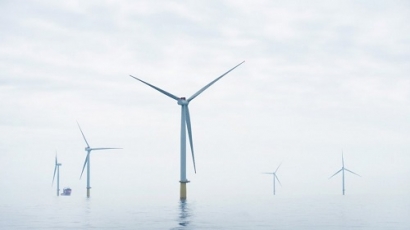
The battery storage solution was presented in Peterhead, Scotland, by Batwind partners Equinor and Masdar. Electricity produced at the world’s first floating offshore wind farm, Hywind Scotland, located 25 kilometers off the coast of Peterhead, will be transported via cables to an onshore substation where the 1 MW batteries are placed and connected to the grid.
Energy storage technologies are expected to become increasingly important to secure grid stability in the future.
“The variability of renewable energy can to a certain extent be managed by the grid. But to make renewable energy more competitive and integrate even more renewables to the grid, we will need to find new, smart solutions for energy storage to provide firm power. How to do this in a smart and value creating way is what we are aiming to learn from Batwind,” said Sebastian Bringsvaerd, Development Manager for Hywind and Batwind.
“While there are many energy storage products and solutions in the market, the battery software solutions are less developed. We want to teach the battery when to hold back and store electricity, and when send power to the grid, thus increasing value of the power,” said Bringsvaerd.
Equinor and Masdar are developing the algorithms for the storage system based on multiple data sources including weather forecasts, market prices, maintenance schedules, consumption patterns and grid services.
Batwind is fully financed by Hywind Scotland partners, Equinor and Masdar and is “a first step towards a scalable, global renewables energy storage system.”
“The value in storage is not necessarily in the amount of energy you can store, but how you optimize, control and offer smarter energy solutions. By developing Batwind we get real time data, commercial experience and technical verification,” concluded Bringsvaerd.

